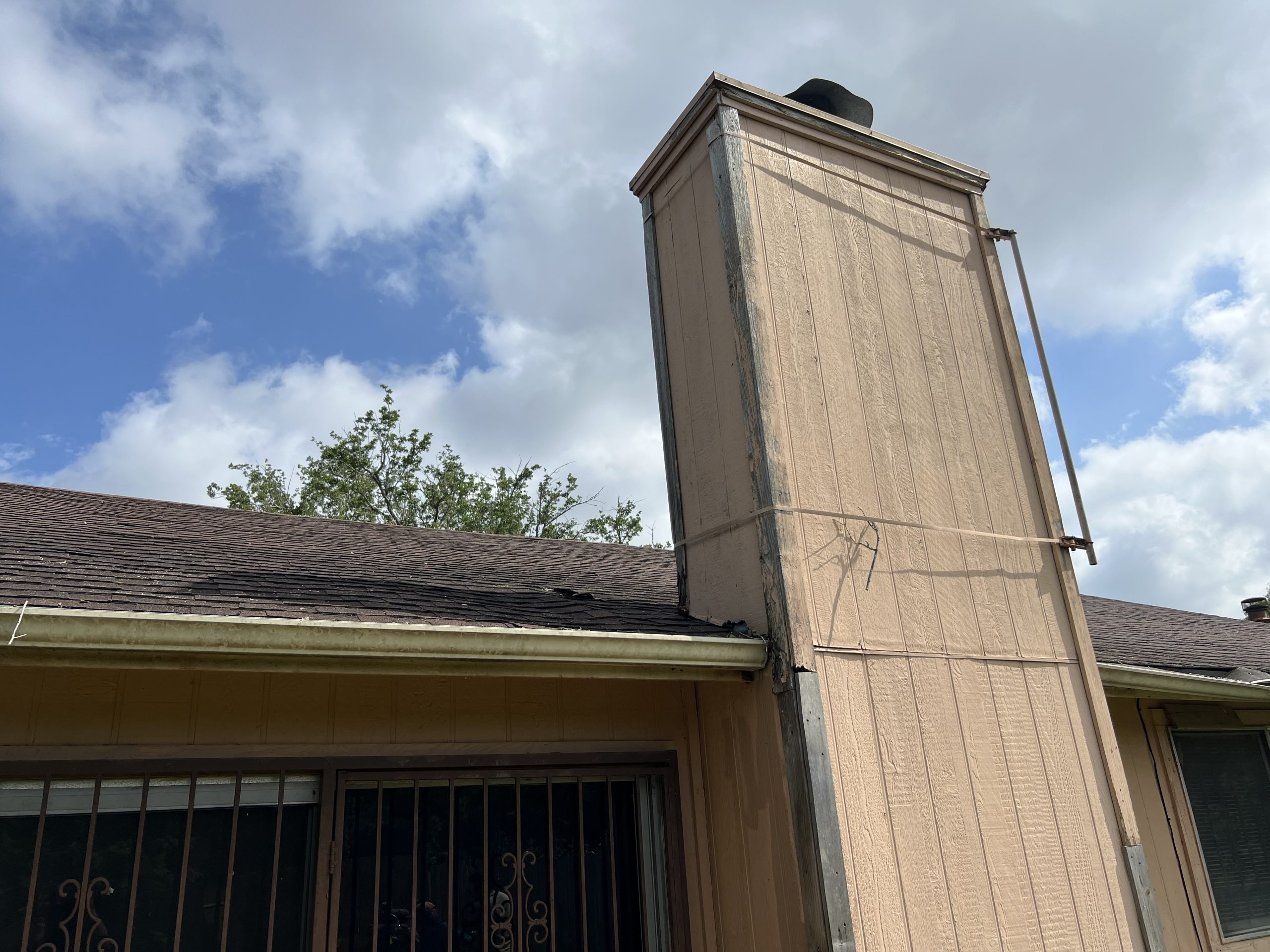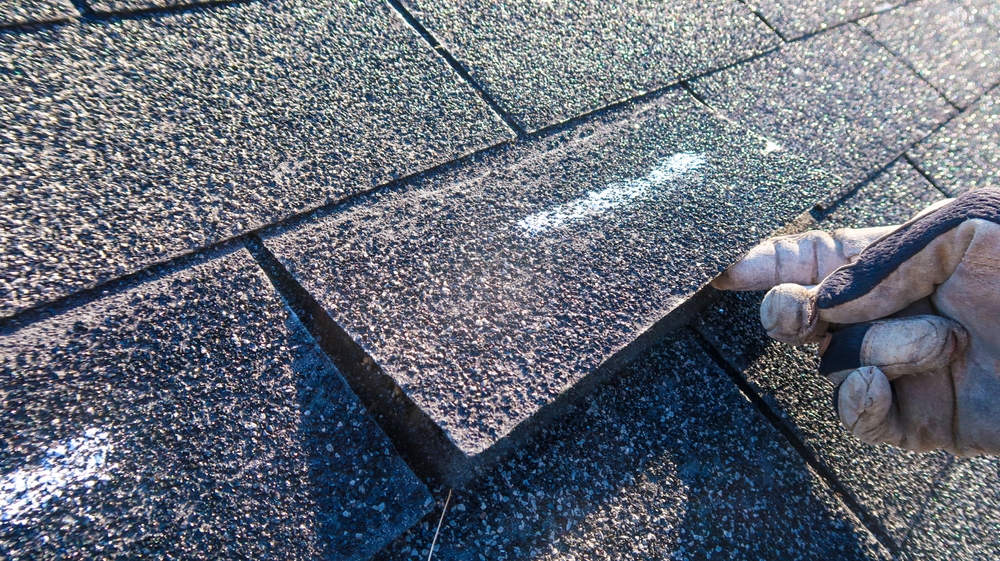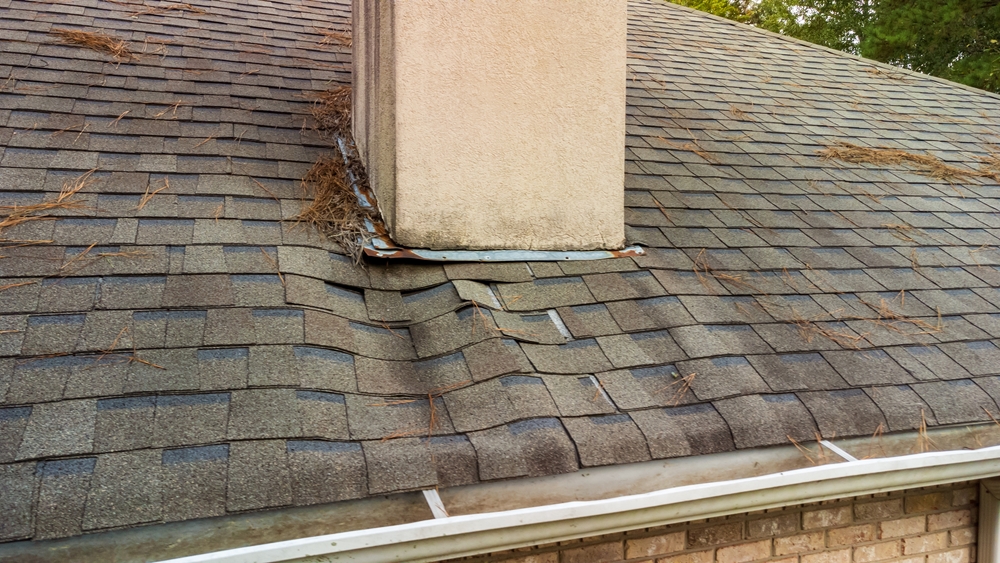With a commitment to excellence and years of expertise, we specialize in restoring homes to their former glory after disasters strike. The first step to our job is assessing what type of damage you have sustained. This step is crucial to ensure the safety and integrity of your home.
In the following blog, we’ll delve into the essential steps for determining roof damage post-storm. Let’s explore why promptly assessing roof damage is vital in safeguarding your property and loved ones.
Immediate Steps to Take After a Storm
In the aftermath of a storm, taking immediate action is crucial to assess and address potential damage to your property. Here are the steps to take immediately after a storm:
Ensure Personal Safety: Prioritize safety above all else. Stay away from downed power lines, unstable structures, and areas prone to collapse.
Call Total Restoration: As soon as you and your loved ones are safe, call us. We will ensure the restoration process goes as smoothly as possible.
Call Your Insurance Company: Ensure your insurance has all the information they need to support your claim.
Remember, if you’re uncertain about safety or the extent of damage, it’s best to wait for professional assistance rather than risking injury or further damage.
When to Call a Professional
Knowing when to call a professional for roof damage is important to the safety of your property. You need to contact the professionals when there is widespread or severe damage, leaks, or structural concerns. Calling professionals is also a good idea if you need clarification on the extent of the damage.
Hiring Total Restoration for roof damage assessment brings numerous benefits. With our specialized expertise and years of experience in storm damage repair, we offer comprehensive services tailored to your needs. Our team is equipped to handle everything from initial inspection to full restoration. This ensures your home is restored to its pre-storm condition efficiently and effectively.
When you choose Total Restoration, you gain access to a wide range of expert services, including:
- Shingle Replacement
- Flashing Repair and Replacement
- Emergency Roofing
- Structural Repairs
Trust Total Restoration to provide professional, reliable, and prompt assistance when you need it most.
Detailed Roof Inspection Process
If you suspect roof damage, our contractors are ready to assist you. Our inspection process includes a detailed assessment of both the interior and exterior of your property.
Interior Inspection
During the interior inspection, our team will carefully examine your attic space for any signs of roof damage. This includes checking for water stains or moisture, which could indicate leaks or inadequate ventilation. We’ll also assess the condition of the roof structure for any signs of sagging, which may suggest structural issues. Additionally, we’ll inspect insulation for any signs of water damage or compression, which could impact energy efficiency and contribute to further damage over time.
Exterior Inspection
When conducting the exterior inspection, our experts will thoroughly examine the surface of your roof for visible signs of damage. This includes inspecting the condition of the shingles and looking for missing, cracked, or curled shingles. We’ll also check for dents in metal components such as gutters and vents, as well as damage to flashing, which can lead to water intrusion and leaks. Additionally, we’ll inspect for any sagging areas on the roof, which may indicate structural issues that require immediate attention.
Types of Roof Damage
Depending on the size and type of storm, there are many different types of damage a roof may experience. These include but are not limited to:
Missing, Cracked, or Curled Shingles: These can leave your roof vulnerable to water infiltration and further damage.
Dents in Metal Components (Gutters, Vents): Dents can compromise the functionality of gutters and vents, leading to improper drainage and potential water damage to your home’s exterior.
Damage to Flashing: Flashing protects vulnerable areas of your roof, such as valleys and joints, from water intrusion. Damage to flashing can result in leaks and water damage to your home’s interior.
Sagging Areas on the Roof: Sagging can indicate structural issues, such as rot or damage to the roof decking, rafters, or trusses. Immediate attention is required to prevent further damage and ensure the safety of your home.
Common Types of Storm Damage
There are various ways storms can wreak havoc on your roof and home. From wind and hail to water and impact damage, each presents unique challenges that need prompt attention to prevent further issues.
Wind Damage
High winds can cause significant damage to your roof, especially to shingles and the underlying structure. The force of the wind can lift, curl, or tear shingles, compromising their ability to protect your home from water infiltration. Additionally, strong winds can loosen or dislodge roofing materials. This leads to potential leaks and structural damage.
Hail Damage
Hailstorms can leave a trail of destruction, causing dents, cracks, and punctures to your roof’s surface. Identifying hail damage is crucial, as even small dents can weaken shingles and make them more susceptible to leaks and deterioration over time. Our experts are trained to inspect for signs of hail damage and recommend the appropriate repairs to restore your roof’s integrity.
Water Damage
Water damage is a common consequence of storm-related roof issues, including leaks and water infiltration. Detecting these issues early is essential to prevent mold growth, rot, and structural damage. Our inspection process includes thorough checks for signs of water damage, such as stains, mold, and dampness, to ensure your home remains dry and protected.
Impact Damage
During storms, tree limbs, branches, and other debris can impact your roof, causing damage to shingles, gutters, and other roofing components. Even minor impact damage can compromise the integrity of your roof and increase the risk of water infiltration and structural issues. Our team will assess the extent of the damage and recommend the necessary repairs to restore your roof’s strength and durability.
10 Homeowner Tips for Checking Your Roof
Here are ten crucial tips to determine roof damage after a storm.
- Examine shingles for cracks, curling, or missing pieces, and check for granules in gutters.
- Look for water stains on ceilings and walls, especially near chimneys, vents, and skylights.
- Inspect the attic for damp insulation, water stains, or mold growth, using a flashlight for dark areas.
- Survey gutters and downspouts to ensure they’re clear of debris and damage to prevent water pooling.
- Check for sagging areas on the roof, which may indicate potential structural damage.
- Assess flashing and seals for cracks or gaps around chimneys, vents, and skylights.
- Examine soffits and fascia for signs of water damage or rot along the roofline.
- Ensure roof vents are intact and functioning properly to prevent moisture buildup.
- Look for fallen limbs or branches from nearby trees that may have damaged the roof.
- Document damage with photos, videos, and detailed records for insurance claims and repair assessments.
Hire a Total Restoration for Your Home
As we enter storm season in Houston, the risk of roof damage increases significantly. At Total Restoration, we understand the challenges homeowners face in safeguarding their properties against the elements. From minor repairs to comprehensive restoration, our team is equipped to handle it all.
If your roof is damaged or you’re concerned about your roof’s condition, contact us. We’re ready to be your home’s roofing contractor.




